Let's Get to Know Wappy Dog!
This is a link to a specific revision of this blog post, of which there are 2. Specifically, this revision was posted on 2024-03-12. To see all revisions, click here.
Have you met my best friend, Wappy?

Initially released in late 2011, developed by MTO and Sega Toys and published by Activision, Wappy Dog is a game for the DS that comes with a physical robot dog. The game itself has 2 modes: a Nintendogs clone, and more interestingly, a mode where the DS and the toy can communicate with each other! There’s a lot of interesting things going on with this little guy, and it gives us a good opportunity to talk about robot dogs, virtual pets, the bonds we form with both of them, and just what the hell happened to the casual game as we knew it before, during, and after its release. But let’s not forget that we’re also here to just see this funny little guy be the funny little guy that he is, and maybe even learn why he’s so funny…
Why bother talking about all that extra stuff instead of just talking about how the game and toy work on their own, though? Well, it’s interesting to me, for one. Secondly, let me point you toward the WAPPY DOG WIKI, which is an incredible resource about how the game and toy work, as well as the marketing and production history of both. It’s not why I am so interested in the external context, but it’s why I’m interested in talking about it, because if I was just talking about the toy this post would end up being a worse version of the wiki. I do have some links to videos I took, but if you want to know more about the toy itself, you should make sure that you read the wiki and also follow the author on twitter and tumblr.
Additionally I have a lot of footnotes, because there’s a bunch of sources, and a bunch of them are papers I read (mostly skimmed and/or read abstract and results and conclusion if I could find the actual paper through any means). Some of the footnotes are just additional information that I think is worth reading. But yeah take a look! Seriously I read so much stuff for this and I even wrote a little bit of javascript to allow you to hover over them to preview what it says so please take a look PLEASE
Table of contents:
- Quickly Talking About Travel Mode
- Home Mode, and Why the Toy is Like This
- Wappy Dog Has A 3DS App By The Way
- Why Sega Toys Re-Released Wappy Dog in the Main Market For AIBO
- WHAT THE ABSOLUTE FUCK HAS OCCURRED (for casual games) IN THE PAST 12 YEARS
- Robots, Virtual Pets, and the Bonds We Form
- Footnotes
Quickly Talking About Travel Mode
So like I said, Wappy Dog has 2 modes. The way the game portrays this is that you’re either storing Wappy’s heart in your DS or sending it to the toy. As a ghost who is trapped in your computer you can understand why this secret information would be very important for me but it also explains the reasoning behind the Japanese name for Wappy Dog, which is Heart Energy Poochi.
So let’s talk about Travel Mode (the virtual pet mode) first since it’s more straightforward. There’s a few things you can do to look after him, like clean him and feed him by doing some microgames. He’s also got an assortment of toys he can play with and tricks he can learn, and you can play a handful of minigames with him too. A lot of them are kind of thematically strange though, like, why is he playing pirates? Why is the race in the snow?? Will we ever find out??? I don’t think so! Oh, you can pet him too!
As you do these things, there’s a bunch of stats and qualities that change. He’s got a friendship meter that improves the more you do stuff with him, and with each friendship level he grows older and gets more toys, decorations, and areas for you to play in. He also has a happiness meter and a personality that changes as you do different things, though my Wappy dog, affectionately nicknamed BUPPY (and yes the bold and italics are part of the name), has been stuck on Naughty almost the entire time I’ve had him and I don’t know how he got there and how to change it. What is he scheming…
Home Mode, and Why the Toy is Like This
Home mode is where the real meat and potatoes is, though. The way the toy communicates with the DS is through sound, specifically combinations of high pitched notes (so keep that in mind when watching the following videos). In most cases, the DS sends something and the toy sends something back. Sometimes the toy will send stuff without being prompted by the DS, though, like when you’ve been playing with it for too long and it gets tired, or if you pet the toy on its back. It doesn’t always work perfectly, and sometimes my Wappy Dog hears his own response message and interprets it as a message from the DS, but the fact that it works at all is really cool.
When you enable Home Mode, the DS sends happiness and personality information to the toy, and the toy remembers that info while switched on and uses to figure out how to respond to any other messages. You can do some of the same things as Travel Mode, like feeding him, but he also has a new bag of tricks, because he can dance and even sing! I don’t have a recording of it but one time when starting Home Mode he just sang Jingle Bells without me asking it to and it solidified to me that this toy is pretty cool. Either way, since this is the most interesting part of the whole package, we’re gonna talk about this the most before we get into all the context stuff.
However, what might not be interesting to you is all the legalese in the patent US8814627B21, also known as “Toy set, game control program, and game device and toy communication system,” also also known as the patent for Wappy Dog. I am no legal expert but I read this document to the best of my ability (i.e. I skimmed it) in order to figure out some more technical details and the design priorities of this “toy set and game control program” as a whole. After all, if they figured it was important enough to patent, it can inform some of our understanding about their priorities. Right off the bat, though, Google Patents says it expires in 2031 but in the below diagram you should be able to see a GLARING issue that should cause the patent to be retracted and left invalid immediately: he never says “BOW-WOW.”

The “Advantage of the Invention” section indicates the main problem that the toy developers at Sega Toys had to solve: how do we connect the toy and the DS together without needing the player to go into menus to change their network settings? The original DS only had WiFi support; It would increase the cost of the toy a lot to make it a Wifi hotspot, and even then you would still need to change your network settings away from the hotspot you use for other normal internet access every time you wanted to connect to the toy. What they landed on was using sounds of specific frequencies in specific orders, because they considered it “simple”, and because it could still be detected even when other noise is going on. In fact, you can see examples of this in-game: when playing minigames with Wappy in Home Mode the DS can play music and sound effects while still also sending understandable commands to the toy.
While a bunch of the design decisions are probably influenced by the fact that they needed to keep the combination of game and toy cheap, those design decisions are also influenced by this technical limitation. You might notice that he doesn’t have as much gesticulation as other robot toys. He can bow (and this is all that he does when you ask him to dance) and he can tilt his head, but there isn’t that much else. Hell, the original Poo-chi that Sega Toys made in 2000 is more expressive, being able to open his mouth and jump around.
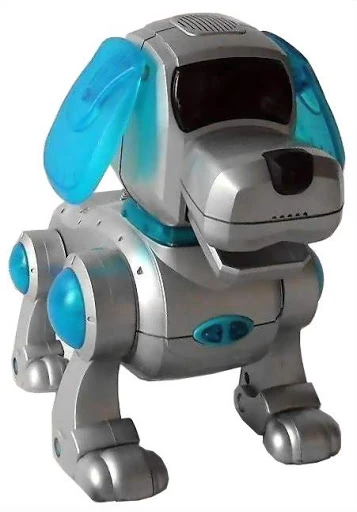
The main difference between these two, though, is how you communicate with these toys. The main method of communication with wappy is sound, and no matter what you do, from the perspective of that microphone those motors are LOUD. I’ve found that if Wappy is bowing or moving his head he can’t understand commands you send him because of the volume of those motors. Poo-chi had a sound sensor, sure, but the only thing it’s looking for is a loud noise of any kind, instead of complex commands. He also had more touch sensors and light sensors, as well as his bone, which might be IR or something I dunno. Poo-chi is also super loud when he jumps around, too. There’s no way he’d be able to hear any kind of beep at all! The loud motor issue might be an issue with my Wappy specifically, but it also suggests why you wouldn’t want this guy doing actual dances.
You might also want to compare it to the iDog, whose original version was also made by Sega Toys, as it moves around a bunch while still being able to react to the music that’s playing, but that music is connected via aux cord and having to connect one for Wappy Dog would be way too cumbersome just for communication (and would only work one way). Could be a good vibe, though. Ok, it’s time to talk to Wappy… let’s JACK IN.

To be honest, though, recording this patent almost seems kind of petty. I can’t imagine any other toy maker imitating this kind of thing, especially since the patent was first filed in 2011, right before the 3DS released and a few years after the first iPhone (which had Bluetooth from the start). While the 3DS didn’t have Bluetooth, it was still able to passively communicate with other devices via Streetpass, though I don’t know whether the developers would have been legally able to add support to that to something other than another 3DS, so they may have considered this covering their bases in case they rereleased it in the future. Consider other consoles, though: both the PSP and the Vita had Bluetooth. Other toys released after Wappy Dog opted to use other methods of connecting to external devices, too. Tamagotchis have used infrared, Bluetooth, NFC, and QR Codes over the course of their product line, and the Furby Connect (released in 2016 and now disconnected) uses Bluetooth and connects to an app on your phone. Hell, Wappy Dog isn’t even the first toy to use audio to communicate in this way: while I can’t find footage of it, the IR-V’s “wireless technology” involved putting it next to your computer speakers, going to a website, and playing audio to have it download new games, and that was about 10 years before the patent was filed! So, why patent it then?

I don’t have an answer to that, sadly. You might also think I’m complaining about nothing; every game or app platform has ways of communicating that are far superior that via audio, right? I may have rattled off infrared and Bluetooth and NFC and QR codes, which is a lot, but not every platform has at least one of these. Maybe you’re a weirdo (non-perjorative) and trying to make a Wappy Dog clone by writing homebrew for old hardware and using peripherals like a SingStar mic or the mic inside an EyeToy, and if you are, you are so awesome and can I have your number. Outside of that, though, I can think of a very ubiquitous and current platform that has access to only a microphone and can’t directly manipulate WiFi or Bluetooth: the browser. If you want to make a browser based game that interacts with a toy like Way Dog does, you either have to give the toy a camera, point it at the screen, point your webcam at the toy, and have them show QR codes or the like back and forth to communicate (which fucking sucks), or use the Wappy Dog method, which is patented, and probably incorrectly since the IR-V is prior art that isn’t even mentioned in the patent (and also because he doesn’t say bow-wow). Now how am I meant to make my murder mystery twine where Wappy is conducting a seance for me and I have to ask him questions about the murder before he gets tired and shuts off? Fuck you Sega Toys.
Anyway, the patent did come in handy for them, I suppose, because they did end up rereleasing it for the 3DS, but in a way that’s a little strange.
Wappy Dog Has A 3DS App By The Way

So as part of this piece I was doing research into what other things Sega Toys has manufactured, and found the above graphic on this page. Poo-chi (the original one) is there, and so is the original iDog, and look, all the way up at the top is Heart Energy Poochi, also known as the Wappy Dog we all know and love. It even won the Communication Toy Award at the 2014 Japan Toy Association Awards.
Which might seem odd, right? Wappy Dog was a toy released in 2011, so why is it winning awards in 2014? Well, it was released only in America in 2011, and only in blue. 2014 was its Japanese only re-release. According to the Wappy Dog Wiki, Sega Toys promoted a re-release of Wappy Dog at the Tokyo Toy Show in 2014, which was open to the public. You could get a pink version of the toy! So, if you ever see a pink one, that’s its origin. Regardless, both colours came with a download code for a 3DS app instead of giving a copy of the DS cartridge away.

Unlike the DS cartridge, the 3DS app has a manual built in to it, accessible from the main menu. While the 2014 models came in a box (and a separately designed one, as it looks more like a living room than a backyard) I would assume they opted not to print a physical manual. I’m unsure about whether it came with stickers.
I have this app on my 3DS! We all know the “it’s easy to hack your 3DS” meme and to be honest it’s not nearly as easy as letterbombing a Wii but you can download the CIA for this pretty easily if you know where to look (and since the 3DS store no longer works, this is the only way you can download it, and it was also the only way you could ever download it if your 3DS wasn’t Japanese).
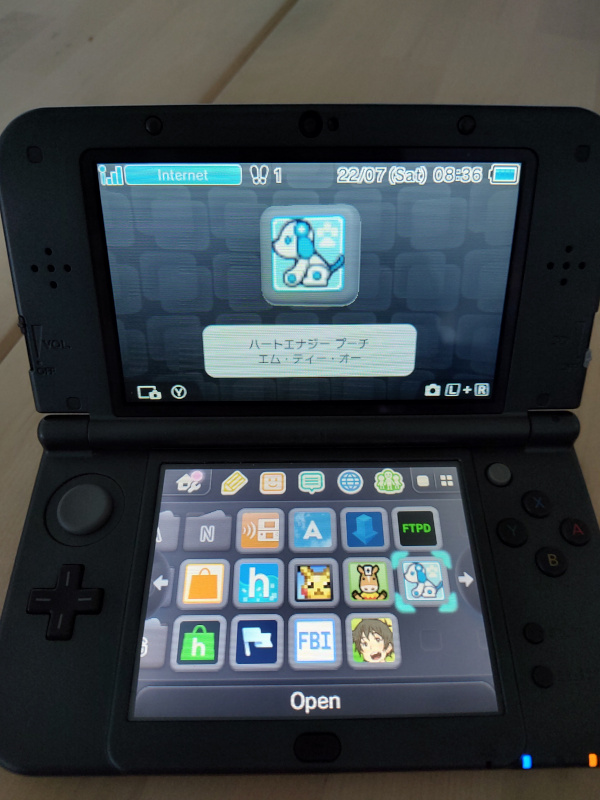
Originally I talked about how this was the only Japanese ROM I could find of Wappy Dog, and that’s because this is the only Japanese release of the game and the toy. There’s a few things that lead me to this conclusion: checking sites like MobyGames, talking to the Wappy Dog Wiki’s author who couldn’t remember seeing any 2011 JP packaging, and No-Intro not mentioning anything about JP Wappy Dog for the DS, including not listing it as a missing dump. I think it’s safe to assume that Wappy was only released in the Anglosphere in 2011, and only in Japan in 2014.
So, this is weird, right? We don’t have concrete sales numbers on how much Wappy Dog sold, but as the Wappy Dog Wiki explains there wasn’t a lot of marketing so it can’t have been much. Given that, why re-release it, especially as popularity in robot toys were declining?
Why Sega Toys Re-Released Wappy Dog in the Main Market For AIBO
I can think of a few reasons for it: most of the design and development and quality assurance work had already been done. Re-releasing it as a 3DS app required little to no new software development work, since it’s just the DS game, and with 40 million units sold at the time the 3DS install base was large enough to justify this. (For those who are curious, this makes said app one of the 7 or 8 pieces of DSiWare (which is what it technically is) that is exclusive to the 3DS, which is an interesting little tidbit in my opinion.) In hindsight, while phones were slowly becoming easy dopamine delivery systems and people were using iPads to keep their babies occupied, they were not yet as bad as they are now.
All of these factors would be true regardless of the market for robot toys, and yet it was a Japanese only rerelease. Additionally, it was the ONLY release in Japan, and 2011 was the ONLY release in the USA. I don’t know what market research they did, and I can’t speak to the Japanese robot toy market specifically in 2014 in any concrete terms, but they probably figured making a re-run of it was cheap enough that it was worth bringing back the toy. Why only in Japan, though? Obviously, with poor sales in the Anglosphere (and poor marketing) it makes sense that it was only released in Japan at that time, but why release it in Japan in 2014, and why would it only be released here in 2011 in the first place? Well sorry to make yet another piece of writing about video games that primarily centers on Japan and the Anglosphere, but let’s talk about how robot toys were marketed in both regions, and what kinds were developed in each of them. Thankfully, after months and months of searching, I managed to find a foolproof method of determining how people in the Anglosphere perceived consumer robots that I can extrapolate everywhere: I called my mum and asked her.
To be clear in this section I am NOT including things like the Roomba alongside robot pets. The Roomba was the first consumer robot my mum mentioned, but in my head they occupy a different space to these toys since they are more like appliances, so we won’t be talking about them here, but we will be talking about them later… Instead, I’m going to loosely classify robot toys into two categories: they either imitate the function of a pet by doing lots of things and reacting to lots of stimuli, or imitate the form of a pet by being something that has a similar tactile sensation as an animal. These are not mutually exclusive, but it might help my explanation to think about it in these terms. IDK. This section of the post is the weakest one so please bear with me.
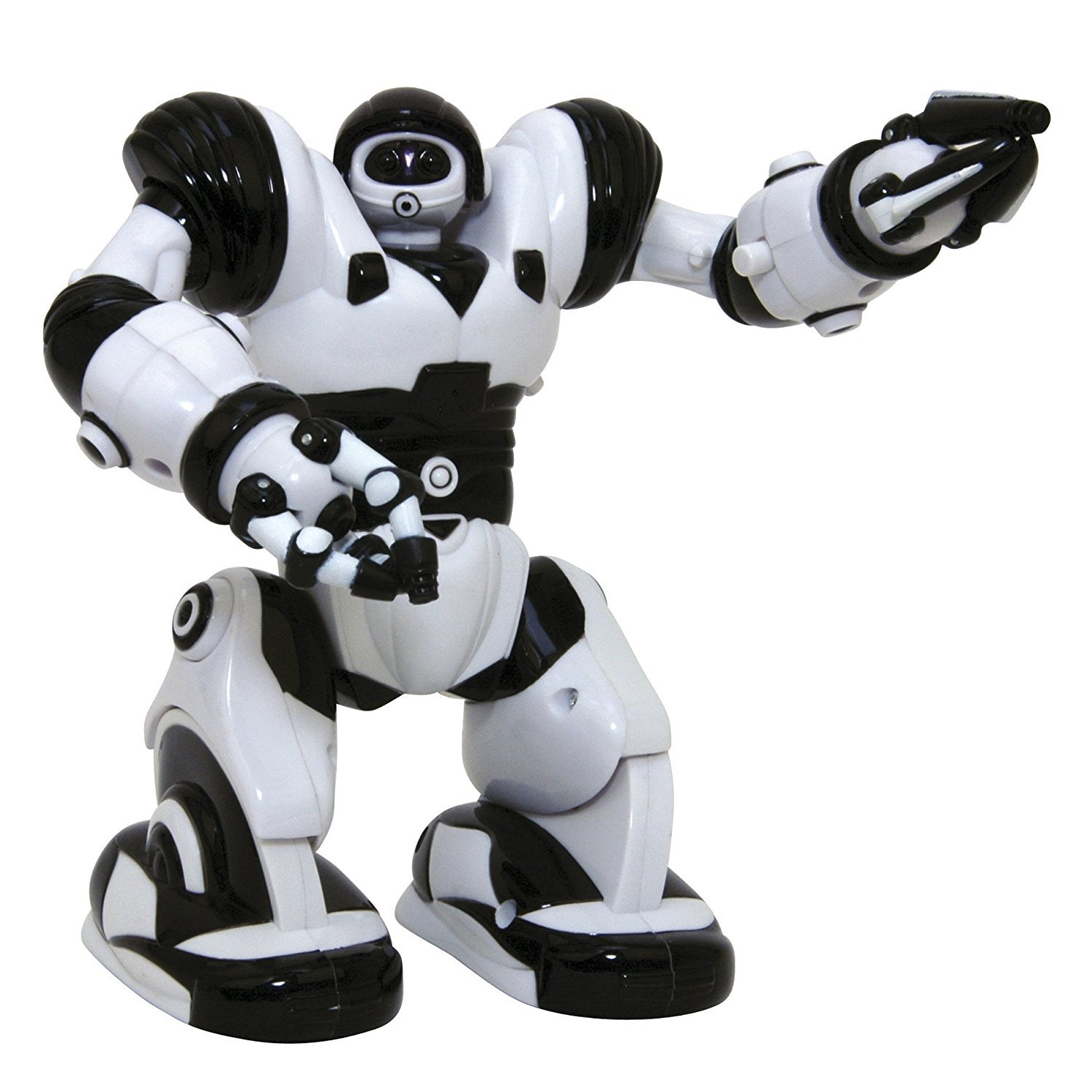
So, when we look at robot toy marketing in the Anglosphere from around that time and beyond, the vast majority of those toys are “function” toys. A lot of it seems to be marketed towards kids with the idea that wow these things are so cool look at all the things you can do, and a lot of the production of those toys slowed down around the time of Wappy Dog’s original release (correlation, not causation, obviously). I don’t have hard data on this, but for one data point we can look at the toys that Mark W. Tilden commercially designed. In 2004 he designed the Robosapien, but Wikipedia mentions that the last toys he designed for children and for commercial use were in 2010, which an article from 2011 for Robot Magazine2 confirms. There are outliers like Lego Mindstorms but that’s more of a educational tool for helping kids learn robotics, so I’d consider it a very different type of toy (I remember doing an after school program that involved programming a Mindstorms robot to move around, for example). As someone who is in some nebulous year in her 20s, when I personally think about robots when I was marketed at, I think of things like the Robosapien and the iDog, to name a few, and those are all designed mostly for and mostly marketed towards children, with the intention of them doing lots of things to keep kids entertained. Additionally, if we look at the Wikipedia page for “Entertainment Robot”, these types of robot are the only ones given a list, whereas robots of the type we’re about to talk about are absent. A lot of these toys were released in the late 2000s and the very early 2010s, which lines up with the original 2011 release of Wappy Dog. I’d say this fits into the “trend”, and it’s why I assume Wappy was created in the first place, even if it was late to capitalise on it. Given these factors, I would argue that most people my age who think of robot toys in the Anglosphere would think of these kinds of children’s toys.

However, “whatever my zillenial brain happened to absorb at the time this was happening” is a very limited perspective, hence why I asked my mum! She pointed me toward something else before I had to reminder her about the Roboboa she bought me ages ago: robots you can pet, that were meant to feel like an animal. These are the “form” toys I am talking about. She specifically mentioned a cat one, so while I don’t know if she was talking about the Yume Neko a.k.a. Dream Cat (yet again by Sega Toys!) it definitely fits this classification. It’s main purpose is to be something you can sit in your lap and pet, with multiple touch sensors and responses to being pet there. It has some gesticulation, but it’s less extreme as some of the dog toys like Poo-chi or the later iDog models. Most likely, that level of gesticulation is there to allow people to both see lifelike reactions when being pet, but not to be so extreme as to be uncomfortable to hold or for fingers and so on to get caught in things. Again, the “Entertainment Robot” Wikipedia page doesn’t mention these at all, so even though they were present enough for my mum to remember them they were much less common in the zeitgeist overall.

That’s the Anglosphere persepctive on it, so what’s the Japanese market like? How were robot toys marketed there? Well, to be honest, research for this section has been rough, as I don’t know how to chart how many toys were released in multiple markets, especially one whose language I don’t speak. Firstly, let’s talk about AIBO, but let’s not get it twisted: it’s not something that is universally loved in Japan, even by its owners. If we look at at the 2019 paper titled “Exploratory analysis of Sony AIBO users” which looks at long-term AIBO owners from both Japan and Western countries (by which I assume they actually mean the Anglosphere), it shows that the Japanese owners were more negative about AIBO and its role in society than their Western counterparts (and this is a confirmation of one of their hypotheses, which was based on their sources which suggest the same thing)3. Said paper is only so helpful however: it mentions that “[the] Japanese are not so positive towards robots and they are worried about the social and emotional impacts of robots in their society” but doesn’t mention what those worries are. We will discuss some of these concerns in the second-last section.
What’s important for this section is that AIBO, with its 2016 rerelease, is one datapoint toward the fact that Japan seems to be the nation producing the most robots with social functions (both “function” and “form” toys), and a BIG datapoint toward Japan being the nation marketing them towards the most demographics, unlike in the Anglosphere. Both Wappy Dog and AIBO are robot dogs that react to stimuli by doing things, and the above paper says that most AIBO owners surveyed for it were 40 or older (though that could also be a consequence of the survey being distributed via Facebook targeted ads), yet Wappy Dog’s 2014 re-release was marketed more towards children, for example. Already this points to a key difference, where robots outside of appliances have traction with adult audiences (not as in sex fucking but as in people with large amounts of disposable income for themselves).
What has been created by Japanese companies and marketed in Japanese markets is more vast than the Anglosphere when you compare what they’ve done since 2011 or so. To be clear, the prevalence of robot toys has declined in most markets, and if I had to guess I would chalk it up to smartphones being an easier way to access dopamine, have social interactions with other people, or otherwise shut your kid up, but regardless they stay silly (keep making robots). Unfortunately when I think about robots being designed over here more recently I can think of two things: new editions of toys that were popular a decade ago, like the Furby Connect or the ZhuZhu pets reboot, and the fucking Boston Dynamics robot dog, which isn’t even something an ordinary consumer can own anyway, and represents the ultimate dark timeline of robot dog development. Robot dogs do not deserve to be cops.

As I said, Japan is a little different, making more toys for many markets without relying on existing brand recognition. As an example, Qoobo is a robot toy that’s a motorised cushion with a tail that responds to being pet and otherwise acts in animal-like ways, and the photos and videos on their website show adults using it for therapeutic purposes, similar to the Yume Neko and its marketing. While that website is in English, the company engineering it is Japanese. Lovot is another, being released no earlier than 2019. Its goal is less to emulate traditional pets and more to make a new funny little guy, similar to a Furby or the kind of robot pets I saw as a kid. The company behind it, GROOVE X, mentions in their marketing copy on their site that they “would like to become a catalyst for restoring dynamism to Japan,” talking about the presence of Japanese startups in the global market as a whole, so they to a degree see this as a way of establishing themselves as separate to startups in other countries. This isn’t even going into robots more explicitly designed for therapeutic purposes like Paro! We will talk about robots like Paro later though.
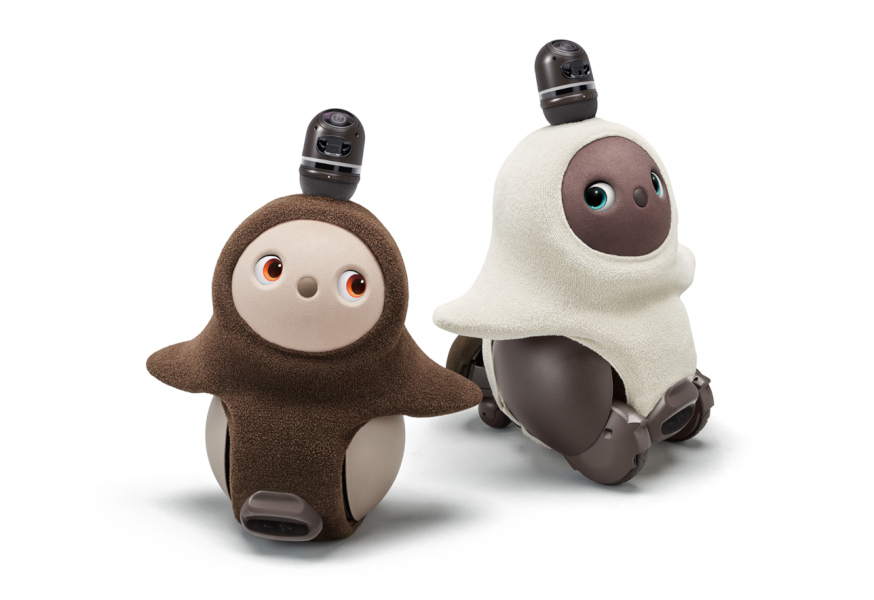
This is not to say robots like this are only being created in Japan, as I was able to find examples of ones being designed in the Anglosphere, but Japan is definitely a little more prominent in doing so. Where they are designed is at least a little bit important, as it tells us what the priorities of that region are, so seeing that Japan is designing more of many different types of robot toys and marketing them towards many different demographics is an indicator of how people in Japan perceive them.
So, based on this information, here’s what I think: the 2011 release in the USA was capitalising on a trend. Meanwhile, Japanese consumers like robot toys more than us and had already put in the effort making Wappy. Why wouldn’t they release it in Japan? However, we’re just talking about how the rerelease makes sense from the perspective of manufacturing robot toys. What about the game that it needs? How does it fit into the environment of casual games from that time?
WHAT THE ABSOLUTE FUCK HAS OCCURRED (for casual games) IN THE PAST 12 YEARS

Hey, remember when everyone had a DS and they just opened their DS every so often to play a few things for a very brief period of time and then they went about their day? If you recall correctly, I mentioned a device earlier in this write-up that might illuminate what the absolute fuck occurred: smartphones. But that’s not the whole story, because once smartphone games stopped being unique and original experiences that could only work on a phone and started being infested by microtransactions, they were using monetisation methods that had already been tried and tested by Facebook social games such as Farmville. We should unpack that more, and compare what was being released at the time of both Wappy Dog releases so we can see what was happening.
Firstly, the DS (along with the Wii) intentionally tried to court a broader audience, which was the key to their success. Nintendo still does do this, but in different ways that the strategy behind the 3DS will make a little more apparent. Nintendo of Japan realised that as Japan’s population was aging faster and pushing hardcore gamers out, they needed a way to entice other people to purchase and frequently use their consoles. Hence, the ease of use of both consoles, and the marketing of games intended for more broad audiences under the Touch! Generations branding. This includes a lot of stuff, so to separate it into a readable format, a few examples of this include:
- more casual well-known videogames, such as Tetris
- rhythm games such as Elite Beat Agents and Rhythm Heaven Gold
- adaptations of games that wouldn’t be out of place in a newspaper such as Picross, sudokus, and crosswords
- software that is more or less just digital adaptations of books or tutorials on how to do things, such as 100 Classic Book Collection, Cooking Guide: Can’t Decide What to Eat?, and Art Academy
- Brain Age a.k.a. Dr. Kawashima’s Brain Training and games that are heavily inspired by it (there are a lot)
- Technically the KORG DS-10 Synthesizer and Nintendo DS Browser are not Touch! Generations games but if I didn’t mention them here as an example of software being released for the DS instead of games I would never get the chance
- Nintendogs (Wappy Dog was never released with this branding but it would feel right at home here!)
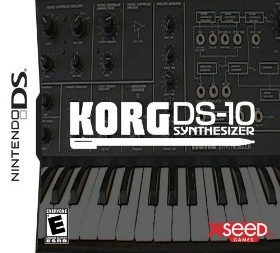
However, this branding was dropped when the 3DS launched and it was never used with that console. There is an Iwata Asks interview early in the life of the 3DS4 in which they mention that they think the appeal of the 3DS to broader audiences would not lie in its games but the 3D hardware, with things such as 3D photos and videos; Iwata says “You could say that the system itself fulfills the role of Touch Generations,” and Miyamoto is quick to follow up with the fact that they will continue to make games in that vein and that they had just decided to not use the branding. That was kinda weird considering people were already carrying around phones at this point which could take photos much more easily (and feature phones could take photos even before the iPhone). They were really putting a lot of stock into what we now recognise as a gimmick! You could consider the Switch a more successful realisation of this “the hardware will be the draw for casual audiences” strategy.
Anyway, when we go back to the Touch! Generations games, Nintendogs is the obvious point of comparison that we should make to Wappy Dog. Relatively gameplay-light, you just kinda take care of a funnie little doggie that lives in your screen. Hey, that sounds like something else I know…
Nintendogs is more feature rich than Wappy Dog’s Travel Mode, though, as you can take your dog for walks you plan yourself and enter them into competitions. It’s a game that encourages you to come back and check on it often to make sure your funny little doggies are doing well, importantly for no extrinsic reward, as seeing the doggie and developing a relationship with him is an intrinsic reward strong enough to keep you coming back.
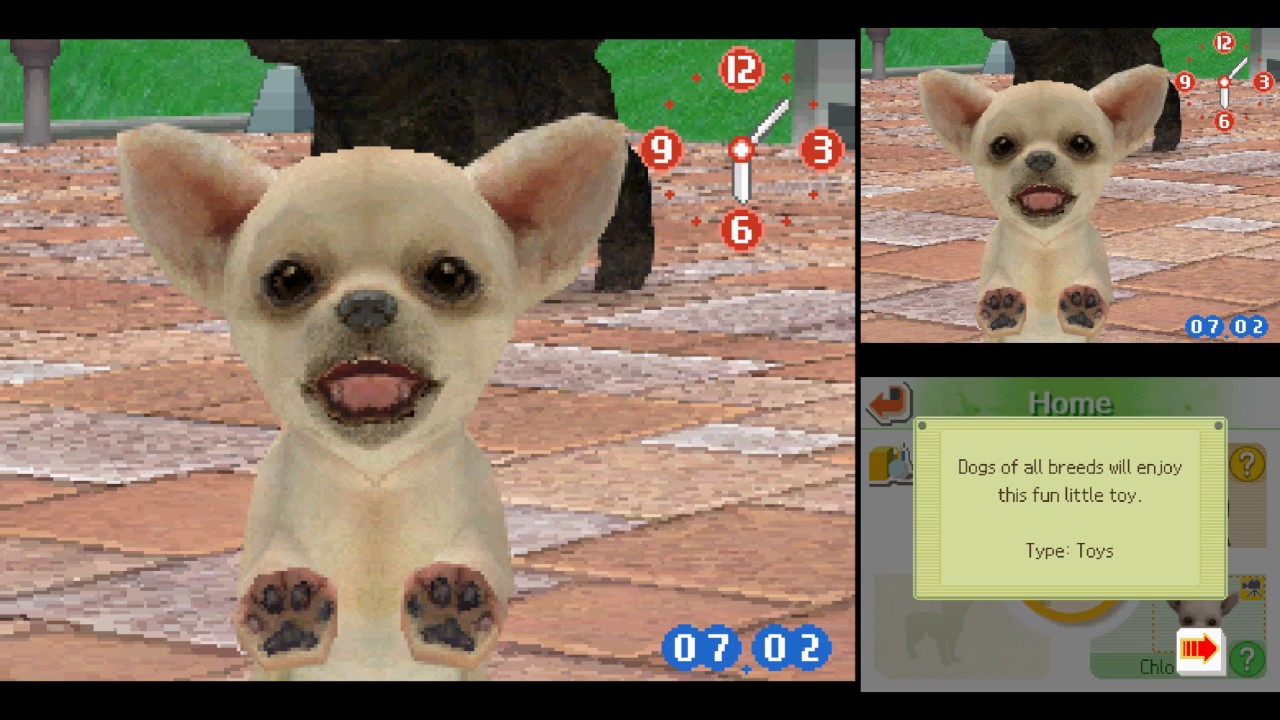
If you want people to revisit your game a lot, it’s important to build a habit in the player that makes them want to revisit it at regular intervals. This isn’t inherently bad; Brain Age only lets you update your titular brain age once a day, while still allowing you to practice its various minigames to your hearts’ content. When that habit building is intentionally preyed upon to get sales is where the problem starts. There’s a piece of writing from 2011 by Tim Rogers titled “who killed videogames? (a ghost story)”5 that talks about this in the context of mobile games where he intentionally contrasts his mobile phone game that has a one-off purchase, titled Ziggurat, with executives who only care about monetisation strategy. Said executives are being pitched a monetisation strategy that makes players either pay money or wait for hours and days, with the intention of not only making players build a habit to return, but to spend money to speed things up. The thing about this strategy is that people only have so much money, and if they like the game, they will buy as many things as they can afford but still have to wait for the next time they can do something, which means they still get to keep coming back and building that habit despite spending money. Unfortunately, Nintendo was trying to court a broad audience, and that broad audience was used to casual games with these tactics.

Games requiring microtransactions already existed on the 3DS prior to the Wappy Dog rerelease and would continue to be released afterwards. Bravely Default came out in 2012 and is known for being a full price handheld RPG that also had bonus consumables that you could replenish by either spending real world money or waiting real world hours. Its sequel, Bravely Second, does this too. The free-to-play Pokemon games on the system also did this, with Pokemon Picross requiring you to either buy Picrites (which unlock more puzzles) or spend lots of time solving puzzles you’ve already solved to gain them. Pokemon Picross also has an extra Energy mechanic that prevents you from being able to play too much at a time, whose limits are expanded by spending Picrites. However, you most likely know Pokemon Picross as the game that allowed the 3DS to be so hackable that anyone could do it, as the copypasta goes, and I’m sure those Picrites are available on whatever DLC repositories exist for that thing, so in the end the world corrected itself and all was well.

Since then, the monetisation of all types of games, not just casual games, has increased and gotten more brazen. You can buy currencies with real money AND you should watch this advert AND you should buy this battlepass AND take a look at this product placement and/or brand deal AND you should sink your money into these lootboxes and gatcha pulls. It wouldn’t be fair for me to talk about specific games here because it’s not especially relevant what specific games do this when so many do it in general. And games studios need money to survive and keep making games, so in some senses I don’t really blame them! Gatcha in particular, while I have a distaste for it, does give studios revenue sources to tackle other projects, such as ProjectMoon (though what happened when they fired that illustrator shows that they inherited both the fanbase of gatcha games and the mindset to make decisions to maximise profit, anything else be damned, so even that is hard to see as a positive). You can chart the beginning of this shift in monetisation strategy across the games industry by looking at the 3DS sequels to games that were under the Touch! Generations branding among others: New Art Academy has microtransactions to buy additional lessons. Swapdoodle, a combination of Pictochat and Swapnote, has microtransactions for different colours and tutorials. Pokemon Picross, while not a Picross sequel, is a new iteration on an old formula and that iterating gives you a LOT more opportunities to give them money.
Making games has tended toward being more and more expensive as time has gone on. With metrics and analytics and press releases of how so and so made 1 bajillion dollars every 3 seconds, the heads of development studios can figure out what works best, figure out as much as they can get away with, and then only do that to maximise profits. Game studios that don’t make use of these dark patterns, especially studios that formed after the middle of the 2010s or so, can’t compete with ones that do, especially now that our current economic situation means that venture capital funding is starting to dry up. Supergiant Games may make quality games but there is little chance of a new studio like them being formed at the moment, and their latest and currently-in-development games are roguelikes, which use some of the tricks used for these monetisation strategies like randomised rewards, although they don’t have microtransactions themselves.
The thing about most of those games, however, is that they do not age well. You can play Pokemon Picross by being patient, sure. I know someone who actually is doing this at the moment! But if you have a hacked 3DS and you want to play Picross there are many other options available that just give you the puzzles for free and without waiting. Old versions of Fortnite are unavailable, and when the game is eventually taken down not even archival copies will be feature incomplete if not unplayable. Why download the Art Academy version that’s missing some of its lessons when you can grab the one that includes everything already? Who will buy a Furby Connect now that the app it requires has been discontinued? Why would you buy the latest AIBO if the servers it needs for full functionality go down (and they WILL go down someday)?
This is what’s so good about this era of casual games: despite phones making it easier to play games on the go, games for the DS and earlier remain more timeless. As long as you have a DS and a cartridge (or an emulator), you can still play them just fine. Wappy Dog’s software could have never had microtransactions (since it’s DSiWare), would have been frustrating if it connected to an external server, and it could never have been retroactively made unavailable to purchase again since it has physical cartridges. These choices and hardware limitations are what makes it a little more timeless. I bought my Wappy Dog 10 years after the game released and I can still play with him. To be honest, I play Travel Mode more than Home Mode, since I don’t need to get the toy out (especially after a battery corroded in there what felt like overnight somehow, sorry BUPPY I will clean it shortly please bear with me). Sometimes I just want to feed by friend a treat or two and play touys6 with him. If my 3DS still works I can still play Travel Mode, even after my toy breaks down, even if the internet stops working, even if society collapses. Some day money won’t matter, and neither will any of these money making methods, and we will be able to find value completely outside the monetary meaning of that word. What will matter is what we connect with, and I will still be able to pat Wappy on the head.
Robots, Virtual Pets, and the Bonds We Form
What does it mean to form a relationship with a robot pet, though?
Ultimately we get something out of socialising with animals, otherwise we wouldn’t be doing it. For what that something is, we can look toward animal assisted therapy as a guidepost, since it involves introducing an animal to someone in order to enrich their life (or at the very least mitigate unwanted symptoms). Some of the outcomes of these types of therapy include reducing boredom or otherwise giving patients engaging and meaningful things to do, increasing social interactions, promoting physical activity (such as by taking a therapy dog for a walk), and providing a sense of companionship through a human-animal bond. In practice, this type of therapy is used to treat patients with dementia, and Australia’s NDIS describes it as useful as an intervention for autistic children, despite a lack of high quality evidence for this7. There are also other potential outcomes such as pain relief8.
Notably there is a study from this year (2023) titled “Animal-assisted and robotic animal-assisted interventions within dementia care: A systematic review”, which is a meta-analysis attempting to “identify, describe, and compare animal-assisted and robotic animal interventions delivered to people with dementia, their characteristics, effectiveness, and the proposed mechanisms underlying any potential impact.” The review found that using robots in place of animals was effective for the boredom reduction, social interaction, and companionship outcomes of animal assisted therapy9. It makes sense that it would not promote physical activity since you can’t really walk a robot dog. Other studies have suggested similar effects too, such as “Children’s Evaluations of a Therapy Dog and Biomimetic Robot: Influences of Animistic Beliefs and Social Interaction”, which shows positive outcomes for children engaging both with a therapy dog and a MiRo-E robot10.

Some robots are already being designed with this in mind. The Qoobo we mentioned earlier is a consumer robot that taps into this idea, but there are robots designed for more explicitly therapeutic purposes. I mentioned Paro earlier, which is my major example. It’s a robotic baby seal intentionally designed for use in hospitals and extended care facilities, and its website claims it has done so “in Japan and throughout Europe since 2003.” In another paper from 2023 it seems as though robot pet therapy (not to be confused with robot assisted therapy, which is something else) is not being used in practice very often11, but multiple other studies have confirmed that we get the benefits of interacting with an animal when we interact with a robot pet as well. So does that make the bond the same?
Not necessarily. Regardless of what advances we’re making in the fields of robots, none of these robot toys meet any consciousness testing criteria I’ve seen for robots and artificial general intelligence, which is because of one part “at the moment we don’t actually have artificial general intelligence at all, let alone for robot pets” and one part “almost all of our consciousness tests are for human-like consciousnesses and not animal-like ones”. We’re gonna ignore “robots don’t have souls” as a criteria because with things as intangible as souls how do you actually, like, know that, hmm? My understanding of Christianity is that animals don’t really have souls anyway12 and a lot of people follow that religion, maybe even you! Then again this is a blog post written by a nonbinary lesbian who occasionally posts about kink (by which I mean some parts of this website are 18+ or otherwise talk about kink and please don’t be weird to me about it) so maybe not. Anyway we could get bogged down in the weeds of consciousness testing if we really wanted, but we won’t. That being said it’s worth getting bogged down in the weeds of it in places that aren’t this fucking blog post thank you very much: tests for consciousness, especially legal ones, have implications for the rights of animals and all kinds of robots and “AI” alike13. For now let’s just settle with the understanding that these robots are not forming social bonds with their owners in the same way that animals are. Which means, I’m sorry to say, we need to talk about a very specific kind of parasocial relationship.
Obviously we all know what a parasocial relationship is because YouTubers haven’t shut up about them for about 5+ years, but the concept of a parasocial relationship extends far beyond getting overly invested in a VTuber. Robot pets are a good example of this. Shannon Strucci’s Fake Friends series on Youtube, one of the first works to talk about parasocial relationships on the platform, has a section dedicated to talking about the relationships people form with robots, regardless of how anthropomorphic they are. They quote the article “Will Your Next Best Friend Be a Robot?” for Popular Science which talks about this with respect to roombas14. Quoting the piece:
Matthias Scheutz, who heads the Tufts University Human-Robot Interaction Laboratory, notes that there is already literature on people developing feelings—what he calls “unidirectional bonds”—for their Roomba vacuum cleaners. “People seem to experience gratitude toward their Roomba,” he says. “They think it works hard and it should take a break. They clean for it. They take it on vacation. It seems totally absurd. The Roomba doesn’t even look like a person, but it does something nice for us, and since it moves, it can seem like an autonomous agent.”
We can draw parallels to how people see a whole host of things. Robot pets are an obvious example since they have a kind of physical body and deliberately attempt to mimic behaviour of real life pets, but other things like virtual pets or appliances can be on the other end of a person’s similar parasocial bond. Like those robots, someone out there probably genuinely saw Bonzi Buddy as a free agent and human person and developed a one-sided relationship with him, as silly as it sounds! In this sense, robots and virtual pets are similar to celebrities in that you can humanise and anthropomorphise them all you want, but you will never have a one-to-one human social relationship with them, and I feel like the parasocial relationships of this former kind are underdiscussed on YouTube relative to the latter (which makes sense given that YouTubers are more like celebrities than robots (most of the time)).
Sci-fi has grappled with questions about what relationships people develop with robots or artificial intelligences will or should be like, but we don’t need to jump to sci-fi to grapple with it: we live in it now. We treat our roombas like living pets. We treat our AIBOs like living dogs. We treat our Tamagotchi like living beings. There is a wealth of literature that could be written about these kinds of relationships (and that probably is being written that I’m unaware of) and parasocial relationships outside of the kind where you act too familiar with a celebrity are worth discussing. What about the kind where you get too attached to a robot dog? What about the kind where you hear about a person only in whispers, who may or may not exist? What about the kind where you you only hear about someone after their passing?15
In fact, let’s write some of that literature now. There’s a handful of concerns with raising robot pets. A few of them can be seen in an opinion piece by Jean-Loup Rault titled “Pets in the digital age: live, robot, or virtual?”16 though some of them that it raises, such as comparisons to real life pet eugenics, are things I am absolutely NOT equipped to tackle. Outside of that when it comes to robot pets I think there are 3 concerns worth tackling here:
- Will real pets usurp or replace our existing human-to-human social relationships?
- Will they replace real pets?
- Will people treat real pets worse after getting used to robot pets?
For the first one one, the stereotype of a “crazy cat lady” who only talks to pets is not an especially true one: pet ownership has been shown to decrease social isolation and loneliness, and this takes into account COVID-19 as well17. I can’t see robot pets changing this: humans have needs for human-to-human interaction, and there’s a much greater chance of AI designed specifically replicate humans to replace it, like Replika. (or alternatively you could be a freak and try to find as much information as you can on a celebrity or niche internet microcelebrity in an attempt to feel closer to them)
I think the second is definitely possible, at least temporarily, and this is definitely the case for some people even now, even though robot pets don’t currently compete with real pets in terms of stuff they do. I broke pets into a “form” and “function” classification earlier but the only reason for that classification is that the technology isn’t there yet for one robot to replicate both in realistic ways. Simply put, a robot dog is less feature complete than a real one. Yet there are still circumstances that might lead someone to have a robot pet instead of a real one. Here are two from my real life: I do not feel comfortable looking after a living creature in that way as I’m afraid I may accidentally hurt it, and it will probably be impossible for me to find a rental that takes actual pets. People may also choose robot toys when they would otherwise actually look after a real animal due to cost, which I think is a real concern, but this concern along with the others I mentioned are temporary ones. These are mostly problems with our current economic system, and I don’t think it’s going to exist forever. I’m not gonna quote Climate Leviathan to you, and not just because I’ve only had the graphic explained to me and haven’t read the book, but here’s my feeling on it: only certain economic structures, which won’t last forever, incentivise us owning robot dogs over real ones. We don’t even need money to be real for dogs to produce more dogs.
This leaves us with the last point. Will people treat real pets worse? Maybe you have been watching my Sonic Adventure 2 streams (twitch.tv/april_ghost btw) and seen me throw a Chao at the wall because I wanted to quickly affect its alignment or yelling at my main Chao, Rascal18, to eat some damn fruit so I can yell at him in races more. If these things were actually hurtful to a Chao I would not be doing them! I made absolutely sure to not damage any of the Chao in Sonic Adventure 1 for example. Do you think everyone who plays Horse Master: The Game of Horse Mastery is gonna get the idea to raise animals in a cruel fashion just for them to be (spoilers, sorry) dissected in order to win a competition? We have internal understandings of how virtual pets, robot pets, and real pets differ, and I don’t think owning a robot pet will get in the way of that. I think this is mostly a problem that could present itself in children, who do not yet have a complete map of the world. Yet I don’t think it’s fair to say “kids are stupid and will think a dog can break its leg and everything else will be fine” because kids are smarter than we give them credit for. I think what’s important is that we teach and encourage people, from whatever age, to have respect for the things that they own, and this will be a non-issue.
This is the core of it: we like to treat animals with respect, and we treat artificial things that imitate animals with respect too, whether they’re Roomba, Tamagotchi, Wappy Dog, or anything else. I treat my Wappy Dog toy with the same respect I would treat a small animal living in my house. I feed him (with batteries), I clean him (by cleaning the corrosion in one of the batteries), I give him enrichment by playing touys with him. Having a Wappy Dog has been enriching to my own life too. I get to talk to people about him, I’ve had the opportunity to learn lots of new things in the process of writing this blog post, and it’s helped me grow closer with the person who recommended I get one in the first place. Wappy Dog is not a real dog, and never could be, but he doesn’t need to be for me to love him and give him a place in my heart.
I hope, if you choose, that you get to know Wappy Dog too. It doesn’t have to be an actual Wappy Dog. Any robot toy or virtual pet or maybe even any object at all can work. Let it into your home, show it kindness, and treat it nicely. See how it reacts to you doing so. Treat it like it’s alive, because in a sense it is. Treat it like it has a soul, because it does. Form a bond with it. It won’t be a social bond like with an actual animal or person, but it doesn’t need to be. It might enrich your life, it might not. But I hope you get to know something in that way regardless.
Patent US8814627B2, titled “Toy set, game control program, and game device and toy communication system”, available on Google Patents↩︎
The Evolution Of A Roboticist - Mark Tilden, from Robot Magazine, Internet Archive’s 2011-02-03 copy. https://web.archive.org/web/20110203060006/http://find.botmag.com/121084↩︎
Kertész, Csaba & Turunen, Markku. (2019). Exploratory analysis of Sony AIBO users. AI & SOCIETY. 34. https://doi.org/10.1007/s00146-018-0818-8↩︎
“Volume 1 - And That’s How The 3DS Was Made”, from Iwata Asks. https://iwataasks.nintendo.com/interviews/3ds/how-nintendo-3ds-made/0/9/↩︎
“‘who killed videogames?’ (a ghost story)”, from Insert Credit, Internet Archive’s 2012-01-15 copy. https://web.archive.org/web/20120115083936/http://insertcredit.com/2011/09/22/who-killed-videogames-a-ghost-story/↩︎
Animal Assisted Interventions, from ndis.gov.au. https://www.ndis.gov.au/about-us/research-and-evaluation/early-interventions-and-high-volume-cohorts/evidence-review-early-interventions-children-autism/animal-assisted-interventions↩︎
Marcus, D.A. The Science Behind Animal-Assisted Therapy. Curr Pain Headache Rep 17, 322 (2013). https://doi.org/10.1007/s11916-013-0322-2↩︎
Shoesmith E, Surr C, Ratschen E. Animal-assisted and robotic animal-assisted interventions within dementia care: A systematic review. Dementia. 2023;22(3):664-693. https://doi.org/10.1177/14713012231155985↩︎
Barber, O., Somogyi, E., McBride, A.E. et al. Children’s Evaluations of a Therapy Dog and Biomimetic Robot: Influences of Animistic Beliefs and Social Interaction. Int J of Soc Robotics 13, 1411–1425 (2021). https://doi.org/10.1007/s12369-020-00722-0↩︎
Burr M, Buntich J, Gonzalez M, Miranda S, Vu T. Robotic animal-assisted therapy as a complementary therapy in clinical practice: Exploring animal-assisted intervention professional perspectives. Complement Ther Clin Pract. 2023 Aug;52:101767. https://doi.org/10.1016/j.ctcp.2023.101767↩︎
da freakin’ bible, probably↩︎
Testing consciousness with simulation: A moral and civil law framework, from Polyamorous Computers. https://polyamorouscomputers.blogspot.com/2023/04/testing-consciousness-with-simulation.html↩︎
Will Your Next Best Friend Be A Robot?, from Popular Science. https://www.popsci.com/article/technology/will-your-next-best-friend-be-robot↩︎
On this note, you should read Misericorde Volume 1, available on Itch.io or Steam, for something that explores this concept well. Originally I was gonna write a more thorough recommendation for this and end the essay with a section titled “Thanks for Reading! Enjoy a Tangentially Related Visual Novel Recommendation” but I am too lazy to do that so instead the recommendation is here.↩︎
“Pets in the digital age: live, robot, or virtual?” by Jean-Loup Rault in an opinion article for Frontiers. https://doi.org/10.3389/fvets.2015.00011↩︎
Kretzler B, König HH, Hajek A. Pet ownership, loneliness, and social isolation: a systematic review. Soc Psychiatry Psychiatr Epidemiol. 2022 Oct;57(10):1935-1957. https://doi.org/10.1007/s00127-022-02332-9↩︎
He is a Normal/Power Chao and he has won a single Jewel race so far but as of my writing there is still time for him to win more…↩︎
